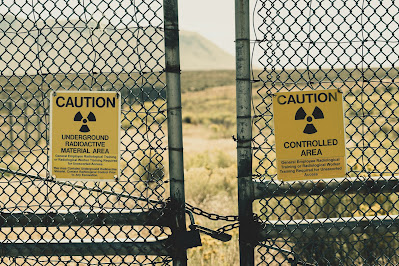Featured
- Get link
- X
- Other Apps
Archeoastronomy: Archaeology and Astronomy
Archeoastronomy: Archaeology and Astronomy
Archaeoastronomy is an interdisciplinary field that combines archaeology and astronomy to study the relationship between ancient cultures and the sky. It is a fascinating area of research that has the potential to reveal a great deal about the beliefs, practices, and knowledge of ancient peoples. In this article, we will explore the history of archaeoastronomy, its methods and techniques, and some of the most exciting discoveries made in this field.
History of Archaeoastronomy
The study of the relationship between ancient cultures and the sky has a long history, dating back to the ancient Greeks and Romans. However, it was not until the 1960s that the term "archaeoastronomy" was coined by American astronomer Gerald S. Hawkins. Hawkins used the term to describe his research on Stonehenge, which he believed was an astronomical observatory.Since then, archaeoastronomy has grown into a vibrant and interdisciplinary field, drawing on expertise from archaeology, anthropology, astronomy, statistics, and probability. It has been used to study a wide range of ancient cultures, from the Maya and Inca to the ancient Egyptians and Greeks.
Methods and Techniques
Archaeoastronomy uses a variety of methods and techniques to uncover evidence of past practices. These include:
- Archaeology: Archaeologists study the physical remains of ancient cultures, including buildings, artifacts, and inscriptions, to understand how people lived and what they believed.
- Astronomy: Astronomers use their knowledge of the movements of the stars, planets, and other celestial bodies to understand how ancient cultures viewed the sky.
- Statistics and Probability: Archaeoastronomers use statistical analysis and probability theory to determine whether astronomical alignments are intentional or coincidental.
- Ethnography: Ethnographers study the beliefs, practices, and knowledge of living cultures to gain insights into the beliefs, practices, and knowledge of ancient cultures.
Discoveries in Archaeoastronomy
Archaeoastronomy has led to many exciting discoveries about the beliefs, practices, and knowledge of ancient cultures. Here are just a few examples:
- Stonehenge: Archaeoastronomers have shown that Stonehenge was likely used as an astronomical observatory, with the stones aligned to mark the positions of the sun and moon at key times of the year.
- Maya: The Maya were skilled astronomers who developed a complex calendar system based on the movements of the sun, moon, and planets. Archaeoastronomers have used this calendar system to understand the Maya's beliefs about the cosmos and their place in it.
- Egypt: The ancient Egyptians were also skilled astronomers, who used their knowledge of the stars to align their temples and pyramids with the movements of the heavens. Archaeoastronomers have used this knowledge to understand the religious beliefs of the ancient Egyptians.
- Inca: The Inca of South America built a network of roads and buildings that were aligned with the movements of the sun and stars. Archaeoastronomers have used this network to understand the Inca's knowledge of astronomy and their relationship with the cosmos.
Best Practices in Archaeoastronomy
As with any field of research, there are best practices that archaeoastronomers should follow to ensure that their work is rigorous and reliable. These include:
- Contextuality: Archaeoastronomers should always consider the broader cultural context in which astronomical practices took place. This means taking into account factors such as religion, politics, and social organization.
- Interdisciplinarity: Archaeoastronomy is an interdisciplinary field that draws on expertise from many different areas. Archaeoastronomers should work closely with experts in archaeology, anthropology, astronomy, and other fields to ensure that their work is well-informed and rigorous.
- Transparency: Archaeoastronomers should be transparent about their methods and techniques, and should make their data and findings available to other researchers for review and critique.
Conclusion
Archaeoastronomy is a fascinating and interdisciplinary field that has the potential to reveal a great deal about the beliefs, practices, and knowledge of ancient cultures. By combining the expertise of archaeologists, astronomers, and other experts, archaeoastronomers are able to uncover evidence of past practices and gain insights into the ways in which ancient peoples viewed the cosmos. As this field continues to grow and evolve, we can expect to learn even more about the rich and complex relationship between ancient cultures and the sky.
Citations:
[1] https://www.jstor.org/stable/20170165
[2] https://www.researchgate.net/publication/294283386_An_introductory_view_on_archaeoastronomy
[3] https://ec.europa.eu/research-and-innovation/en/horizon-magazine/galactic-archaeology-astronomers-are-using-stars-fossils-study-milky-way
[4] https://link.springer.com/10.1007/978-1-4614-6141-8_25
[5] https://unesdoc.unesco.org/ark:/48223/pf0000244721
[6] https://en.wikipedia.org/wiki/Archaeoastronomy
Popular Posts

Why are Memories Forgotten?
- Get link
- X
- Other Apps

How is the Colour of a Lobster Determined?
- Get link
- X
- Other Apps

Can Sound Waves Solve Plastic Pollution?
- Get link
- X
- Other Apps

Can Animals Recognise Human Faces?
- Get link
- X
- Other Apps

Do plants sleep? The surprising science of sleep in the plant kingdom
- Get link
- X
- Other Apps

Is the Earth Spinning Faster?
- Get link
- X
- Other Apps

Can Bad Times Actually Improve Your Life? Surprising Benefits of Adversity
- Get link
- X
- Other Apps

Can Brain Implants Make You More Powerful?
- Get link
- X
- Other Apps

The Future and Potential of Nuclear Batteries
- Get link
- X
- Other Apps

Music and its impact on Studying
- Get link
- X
- Other Apps
Popular Posts

Why are Memories Forgotten?
- Get link
- X
- Other Apps

How is the Colour of a Lobster Determined?
- Get link
- X
- Other Apps

Can Sound Waves Solve Plastic Pollution?
- Get link
- X
- Other Apps

Can Animals Recognise Human Faces?
- Get link
- X
- Other Apps

Comments
Post a Comment